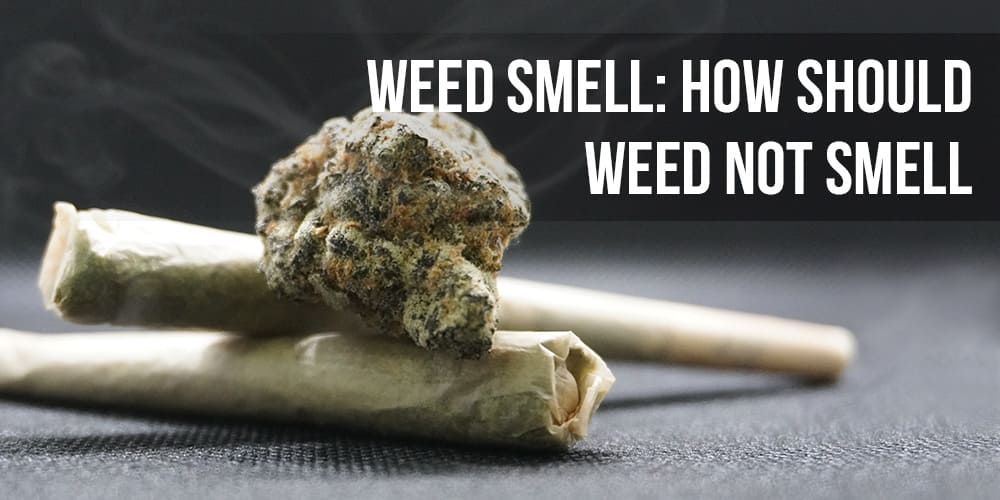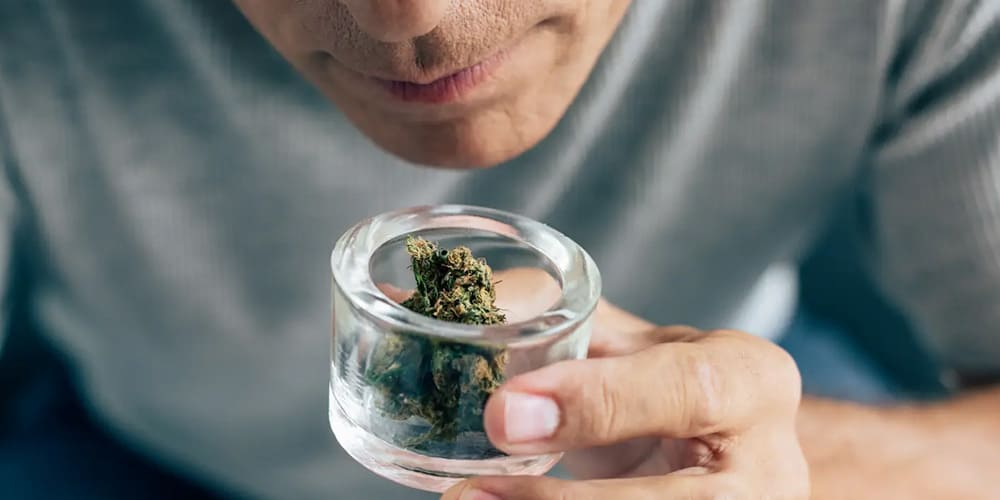
Weed Education
Weed Smell: How should weed not smell

In the complex world of cannabis, the scent is more than just a mere identifier, it’s a story. It tells of its strain, quality, and even the care with which it was cultivated. However, amidst the diverse aromatic profiles, one might ponder, “How should weed not smell?” Understanding the nuances of this question not only enlightens consumers about the red flags in cannabis aroma but also arms them with knowledge crucial for distinguishing top-notch buds from those of inferior quality.
- Ditch Weed vs. Cultivated Cannabis
- What’s the rarest weed strain?
- Cannabis Effects: Cannabis Entourage Effect
Understanding the Basics of Weed Smell

Cannabis is known for its diverse array of scents, primarily due to compounds called terpenes. These natural compounds contribute to the scent profile of different cannabis strains, ranging from earthy and skunky to citrusy and sweet. The variety of weed smells associated with cannabis is vast, and the terpenes are a key factor in determining not just the aroma but also the potential effects of a strain, offering clues about its characteristics and potency.
However, while the terpene profile of cannabis can provide pleasant and distinctive aromas, there are times when these scents may be overshadowed by less appealing smells. When the natural fragrance of cannabis is overpowered by off-putting odors, it serves as a warning sign. These undesirable weed smells can indicate a range of issues, from improper storage to the presence of molds and contaminants, suggesting that the weed may not be in optimal condition.
Recognizing the significance of these odors is crucial for cannabis users. Off-putting weed smells not only detract from the overall experience but also signal potential health risks associated with consuming compromised weed. Being able to identify these warning signs can help ensure that the cannabis being used is of high quality and safe, underscoring the importance of awareness and knowledge about the terpene profiles and possible signs of contamination in cannabis.
Embark on a journey with APE BREATH 5 original mini joints, each weighing 0.5 grams. This indica-dominant hybrid offers a balanced blend of stimulating and soothing effects, featuring rich notes of sweet fruit and earthiness for an immersive experience.
Mustiness and Mold

One alarming indicator of compromised cannabis is the presence of a musty or moldy smell. This odor is a clear warning sign, indicating that the weed may be affected by mold. Such a weed smell, reminiscent of dampness, mildew, or even wet socks, suggests that the cannabis has been exposed to excessive moisture, leading to mold growth. Identifying this odor early can prevent the consumption of potentially harmful cannabis.
The smell of mold on cannabis is not just a minor inconvenience, it represents a significant health risk. Moldy cannabis can produce mycotoxins, harmful compounds that pose serious health concerns, especially for individuals with allergies, asthma, or compromised immune systems. The detection of a moldy odor in cannabis should prompt immediate caution, as it indicates that the product is unsafe for consumption.
Recognizing a moldy or musty odor in cannabis is crucial for protecting one’s health. Consuming mold-infected cannabis can lead to respiratory problems and exacerbate existing health conditions. For cannabis users, being able to identify such smells is essential for ensuring the quality and safety of their product. Awareness and vigilance can help avoid the risks associated with moldy cannabis, emphasizing the importance of sensory evaluation in assessing cannabis quality.
Chemical and Pesticide Odors

A pronounced chemical odor emanating from cannabis is a significant warning sign that should not be ignored. Such a weed smell, which might resemble cleaning agents or pesticides, can indicate several issues with the weed’s cultivation and processing. This red flag suggests that the cannabis may have been exposed to or treated with harmful substances, raising concerns about its safety and purity.
The presence of a chemical weed smell can point to improper growing practices, including the use of pesticides or other chemical agents that should not come into contact with consumable products. Additionally, it might indicate a failure in the flushing process before harvest, where growers are supposed to cleanse the plants of excess nutrients and chemicals. Proper flushing ensures that the final product is free from residual chemicals that could harm the user.
Consuming weed that has been contaminated with chemicals can have detrimental effects on health, potentially leading to acute reactions or long-term consequences. For consumers, being able to detect such odors is a key part of assessing the quality of cannabis, underscoring the importance of vigilance and knowledge in avoiding potentially harmful products.
ndulge in Gushers Premium THC Cartridge, where indica-rich Gelato #41 meets Triangle Kush. Enjoy tropical, creamy flavors for relaxation, stress, and pain relief. Our cartridges boast the highest THC, 10% more volume than others.
Hay or Grass

A cannabis aroma that leans more towards hay or freshly cut grass rather than the characteristic scent of weed can be indicative of issues in the post-harvest process. This particular weed smell points to inadequate curing and drying methods, which are essential steps in preparing cannabis for consumption. The curing process is crucial for developing the full spectrum of aromas and flavors in cannabis, and shortcuts or errors in this stage can significantly alter the end product’s quality.
While the presence of a grassy or hay-like odor in weed isn’t necessarily harmful to health, it does have implications for the user experience. Improper curing can result in a product that is less potent, as the process affects the concentration of cannabinoids and terpenes. These compounds are responsible for the effects and the flavor profile of cannabis, and their diminished presence can lead to a less satisfying experience for the user.
Furthermore, cannabis that hasn’t been properly cured or dried tends to provide a harsher smoke when consumed. This can detract from the enjoyment and comfort of smoking, making the overall experience less pleasant. Recognizing the significance of the curing and drying processes can help users identify high-quality cannabis and ensure a better, more enjoyable consumption experience.
Dive into APE Blunt Kool Aid, a Sativa-dominant blend, perfect for day use. With grape and lavender aromas plus fruity, bubblegum notes, it offers potent relaxation and euphoria, ideal for tackling stress and insomnia.
Unusual Sourness or Bitterness

An unusually sour or bitter smell in cannabis, which starkly contrasts with its natural citrus or earthy aromas, serves as an alert to potential spoilage or contamination. Such odors are not characteristic of cannabis in its healthy state and can signify that the product has been compromised. Identifying these off-putting weed smells is crucial for avoiding the consumption of contaminated cannabis, which could lead to undesirable effects or health issues.
Poor storage conditions are often to blame for the development of sour or bitter odors in cannabis. Exposure to excessive moisture, for example, can create an environment conducive to the growth of bacteria and fungi. These microorganisms can not only alter the weed smell and appearance, but also its safety for consumption.















